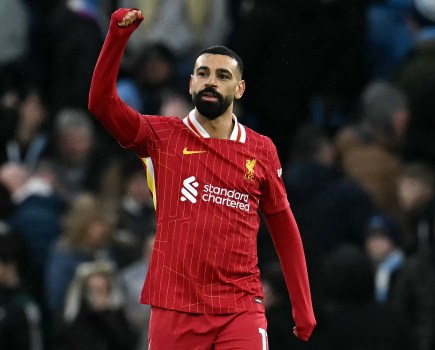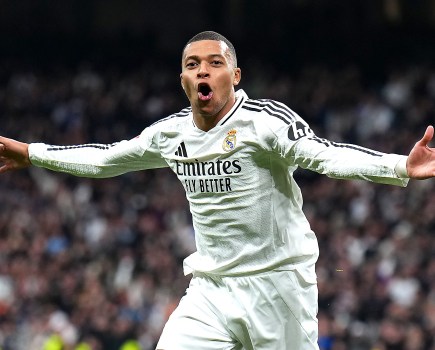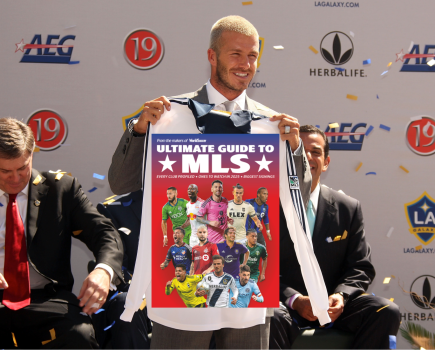 Like the curate’s egg, this year’s Brasileirão Serie A season promises to be good in parts, bad in others. Whether that means the whole will be entirely spoiled remains to be seen.
Like the curate’s egg, this year’s Brasileirão Serie A season promises to be good in parts, bad in others. Whether that means the whole will be entirely spoiled remains to be seen.
A good place to start any season preview is with anticipation, or in the case of the Brasileirão, a complete lack of. Last Sunday was Domingo de Decisões, or finals day, in many of Brazil’s 27 state championships. Ten top flight teams were involved. On Wednesday and Thursday it was the turn of the Libertadores and Copa do Brasil quarter finals. Amidst all this, Serie A will limp into action this Saturday and Sunday, with the nine sides who are still fighting in the two aforementioned knock-out competitions likely to field reserve sides. Months of sweaty palmed build-up this is definitely not.
Still, on the pitch at least, there is plenty to get excited about. For the first time in many years Brazilian football fans will be able to watch a genuine world superstar strut his stuff. Fatherhood, and a sense of his responsibilities as the most coveted young Brazilian footballer in a decade, has given Neymar added maturity, and he is now no mere callow youth. As a player, he is simply marvellous – full of boundless energy and limitless imagination. By August we may have lost count of those electrifying dashes from deep, those insouciant dinked finishes.
If Neymar is ahead of the pack of other exciting home grown talent, then the pack is not that far behind. The rumour that his Santos teammate Paulo Henrique Ganso was recently caught smiling remains unconfirmed, but it is true that the playmaker, now recovered from injury and on top form throughout Santos’ Libertadores run and Campeonato Paulista triumph, seems happier now than at any time in the last two years. Then there is Lucas, and his resurgent São Paulo teammate Casemiro; Dedé, Vasco’s imperious zagueiro; volante Romulo, also at Vasco; Leandro Damião down at Inter (who may be the first of the bunch to be sold to Europe), Grêmio’s defensive midfielder Fernando, Fluminense’s exciting forward Wellington Nem, Internacional’s talented midfielder Oscar, and many others. The cupboard marked “prodigies” is as well stocked as it has been in some time.
And that’s just the younger generation. A quick look at the chances of the top sides reveals an abundance of more established talent. Defending champions Corinthians, built on the superb defensive quartet of zagueiros Leandro Castan and Chicão, and volantes Ralf and Paulinho, plus midfield schemers Alex and Danilo, may lack a little up front, but will be as swaggeringly rugged as ever. That toughness, and a remarkable ability to do just enough (there were six single goal victories during the run-in to last year’s title), makes Corinthians slight favourites for this year’s championship.
Santos, who added strength in depth during the off-season, but may struggle should Neymar or Ganso be absent through injury or Seleção duties (there will be no Brasileirão break during the Olympics, for example) may be just behind them, alongside a richly talented Fluminense side. Flu’s midfield is the envy of most, with Thiago Neves, a revitalized Deco, and the experienced Wagner creating chances for Fred, who, despite the claims of Damião, might still be the most effective striker playing in Brazil.
That crown will be disputed by two other big name strikers, Vágner Love at Flamengo and Luís Fabiano at São Paulo. Both have been in fine form in the first part of the year. Their clubs, however, are likely to be some way off the championship pace. While São Paulo certainly have the players to mount a challenge, whether veteran coach Emerson Leão is the man to get them there or not is open to question. Flamengo will rely on a promising crop of youngsters, including volante pairing Muralha and Luiz Antonio, plus the dubious charms of Ronaldinho Gaúcho, assuming the club is unable to rid itself of the faded superstar and his hefty wage packet. Avoiding further crises, financial or otherwise, and grabbing a Libertadores spot for next year, might be the extent of the ambitions of Brazil’s biggest club in 2012.
Rounding off the list of potential title challengers are two dark horses, Internacional and Vasco. Vasco surprised everybody by battling for the title until the final day in 2011, but another 12 months, and another Carioca and Libertadores campaign, will likely have sapped the energies of midfield kingpins Juninho Pernambucano and Felipe a little too much come year end. Inter are another talented side, with Oscar and D`Alessandro providing the bullets for Leandro Damião to fire home. Much will depend on whether Damião remains at the Beira-Rio after the summer transfer window.
A trio of Brazil’s most storied clubs will begin the season searching for identity. Palmeiras began the year well under Felipão and the club briefly seemed a happy family again, but a dip in form soon revealed the cracks, if not schisms, in the relationship between coach and board. There are talented players here, such as temperamental Chilean midfielder Jorge Valdivia, but plenty of gaps too, particularly if Hernan Barcos is not, after all, the answer up front. Botafogo and Grêmio, in rebuilding phases in a footballing environment where a rebuilding phase is expected to start on Monday and finish on Friday, are likely to be in the same inconsistent boat. Grêmio are slightly better off, having spent big bringing in coach Vanderlei Luxemburgo, but were dealt a hammer blow when feisty forward Kleber sustained a long term injury in March. The best both can hope for is Libertadores qualification – and that is likely to be a considerable reach.
And then there are the two Belo Horizonte giants, Atlético Mineiro and Cruzeiro. The former have bags of ability, from excellent zagueiro Réver through volante Pierre, gifted number 10 Guilherme, and Neymar’s former Santos teammate André up front, but history weighs heavy on atléticano shoulders, and this is a team that possesses a rare talent for losing. Weak-chinned coach Cuca, who could have been cast in the club’s image, might not have the necessary steel to change that.
Cruzeiro, meanwhile, are a shadow of their former selves, and only have Argentinian midfielder Montillo, as a standout. The club is also a manager down already this year, Vagner Mancini having been sacked after the Campeonato Mineiro semi-final defeat against América. Still, Atlético and Cruzeiro fans will at least be able to watch their teams disappoint them in comfort, the reopening of the Indêpendencia stadium in Belo Horizonte finally putting an end to two years of exile in Sete Lagoas, 70km away from the capital.
Down at the bottom, a difficult year lies ahead for two clubs from the north east of the country. Recife’s Sport and Náutico both did well to win promotion from Serie B last year (Sport managed it on the last day of the season), but despite pulling in bigger crowds than many clubs from the sul and sudeste of the country, regional financial disparity will make it extremely difficult for either to compete. At least Salvador’s Bahia, the region’s other representative, should be able to build on last year’s survival, under the elegant tutelage of coach Paulo Roberto Falcão. Other clubs likely to spend most of 2012 looking nervously over their shoulders include Portuguesa, already relegated once this year, to Serie B of the Campeonato Paulista, Figueirense, Atlético Goianiense, and Ponte Preta, though the last named may surprise. If a big team is going to drop into the rebaixamento mix, it might be Cruzeiro, who only escaped on the last day last year. Finally, Coritiba will most probably end up, as they usually do, in mid-table.
So much then, for the innocent flower. There is not so much a serpent lying under Brazilian football as a whole nest of vipers. Leadership issues, if not a power vacuum, at the head of the CBF. At the same time, the inability of Brazilian clubs to set aside petty squabbles and organise themselves into a cohesive unit to bring about reform. The ludicrous calendar, which, as mentioned, means top clubs starting the league season fielding reserve sides, exhausted after the estaduais, and having to wave goodbye to their stars every time the seleção play (including those two Olympic weeks in July and August). The lack of clear-headed planning that has led to the mad, insanely expensive dash to get things ready for 2014.
Perhaps most serious of all is the crisis on the terraces. Last year’s average Serie A crowd was a pitiful 14,000, and while this is partly due to stadium closure for 2014 building work, the problem runs deeper. Brazilians love their teams, but, justifiably sceptical about the idea of supporting or funding often corrupt, incompetent institutions in society in general, are frequently dubious about doing the same for their football clubs. This means that the sense of duty to attend football matches, “to support the team”, prevalent in other countries, is absent. As a result, Brazilian fans tend to pick and choose their games. That sensibility, coupled with inconvenient kick-off times (10pm is common for midweek games), frustrating public transport systems, an often justifiable fear of violence (battles between torcida organizadas flared up again during the state championships, leading to deaths in São Paulo, Recife and Goiânia), and blanket pay-per-view TV coverage, means Brazilians are fast losing the habit of going to the game. And that, unfortunately, is something that all the Neymars, or the Diego Forláns or Clarence Seedorfs (rumoured transfer targets for a clutch of big Serie A sides) in the world will not be able to change.
By James Young






